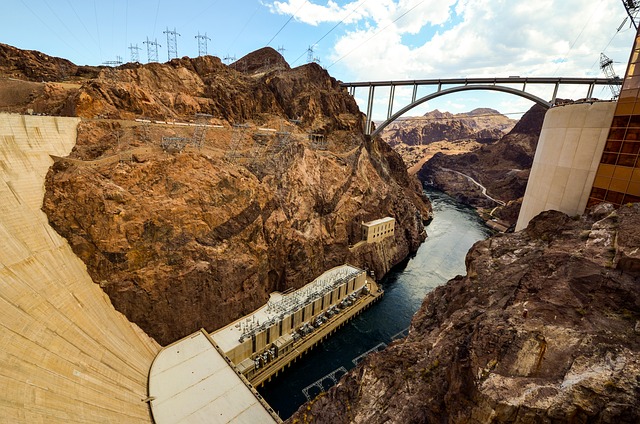How Consulting Engineers Enhance Geotechnical Engineering Projects: Insights Into Their Competence, Approaches, and Collaborative Approaches
Consulting designers are critical in improving geotechnical design projects, using their specialized knowledge to browse the intricacies of subsurface conditions. Their collective approaches foster communication among diverse task stakeholders, ultimately shaping the job's trajectory.
Duty of Consulting Engineers
The know-how of getting in touch with engineers in geotechnical design is basic to the successful execution of building jobs. These specialists play a critical function in analyzing dirt and rock residential properties, which are essential factors influencing design and building and construction choices. By carrying out thorough site investigations, getting in touch with engineers collect important data that notifies the design process, ensuring projects are improved secure and ideal ground.
Consulting designers additionally provide invaluable insights into threat administration (geotechnical geologist). They determine prospective geotechnical risks, such as landslides, soil liquefaction, and settlement issues, making it possible for stakeholders to apply reliable reduction methods. Their expertise help in maximizing structure styles, which can lead to significant cost savings and boosted safety and security
Moreover, seeking advice from engineers serve as an essential web link between project proprietors, designers, and specialists. Their ability to equate complex geotechnical data right into workable suggestions cultivates partnership and helps with educated decision-making throughout the project lifecycle. This multidisciplinary technique not just enhances job performance yet also makes sure compliance with regulatory criteria and ideal practices.
Trick Methodologies in Geotechnical Design

One key technique is website examination, which involves performing field tests and research laboratory evaluations to collect data on subsurface conditions. Techniques such as Standard Penetration Testing (SPT) and Cone Infiltration Screening (CPT) are widely utilized to assess soil stratigraphy and toughness. In addition, geophysical techniques, consisting of seismic and electric resistivity studies, offer non-invasive means to evaluate subsurface characteristics.
An additional important technique is mathematical modeling, which enables engineers to imitate numerous scenarios and anticipate how soil-structure interactions will certainly behave under various loading conditions. Finite Element Analysis (FEA) is a common approach used in this context.
In addition, the style of foundations, retaining frameworks, and earthworks relies greatly on these approaches - geotechnical geologist. By integrating innovative analytical tools with field data, consulting engineers can create tailored remedies that address details project challenges, ultimately adding to the stability and safety of building and construction tasks
Value of Dirt Evaluation
Soil evaluation offers as a foundational element in geotechnical engineering, providing necessary understandings right into the physical and chemical properties of soil essential for reliable building planning. Comprehending soil attributes is crucial for determining its load-bearing capability, drainage actions, and capacity for negotiation or instability. Comprehensive soil examinations, consisting of tasting and lab screening, aid recognize parameters such as soil kind, moisture content, density, and shear stamina.
These analyses educate the option of ideal construction strategies and products, eventually influencing project safety and durability. For circumstances, natural soils may require different foundation designs compared to granular soils, necessitating tailored design options. Additionally, useful site soil analysis aids in identifying contaminants that could present risks to human health or the atmosphere, allowing for the development of reduction strategies.
Including dirt analysis into the beginning of task growth aids to lessen unpredicted obstacles, ensuring that designers can prepare for and resolve prospective concerns prior to they escalate. By establishing a thorough understanding of the website problems, speaking with designers can optimize design performance and lower prices, thus boosting the overall success of geotechnical design projects.
Collaborative Techniques in Projects
Effective geotechnical tasks often pivot on collaborative approaches that bring together diverse knowledge from different techniques. Effective cooperation amongst consulting engineers, geologists, ecological scientists, and building professionals is vital for resolving complicated challenges and enhancing task end results. By leveraging the distinct abilities and knowledge of each staff member, jobs can gain from a holistic understanding of the website problems, regulative needs, and engineering restrictions.
Routine communication and interdisciplinary conferences promote the sharing of insights and cultivate a society of teamwork. These collective initiatives enable the identification of prospective threats early in the project lifecycle, enabling for timely reduction approaches. Integrating responses from stakeholders, consisting of local communities click over here now and regulative companies, makes sure that all viewpoints are considered, enhancing job approval and conformity.
In addition, the assimilation of innovative modern technologies, such as Geographic Information Solution (GIS) and Structure Information Modeling (BIM), additional enhances partnership. These devices enable for the real-time sharing of data and visualization of geotechnical conditions, promoting notified decision-making. Eventually, a joint approach not only improves visit this site right here project execution but additionally lays the structure for cutting-edge remedies to intricate geotechnical design difficulties.
Effect On Job Outcomes

Consulting engineers utilize sophisticated techniques such as risk analysis and predictive modeling, which boost the accuracy of job projections. Their ability to incorporate cutting-edge innovations, like geotechnical instrumentation and data analytics, additionally improves the style and building and construction processes. As an outcome, tasks experience improved effectiveness, decreased prices, and minimized delays.
In addition, fostering efficient interaction and collaboration amongst team members improves analytic capabilities. When difficulties develop, a united front allows for quick recognition of remedies, preventing prospective obstacles. Inevitably, the joint initiatives of seeking advice from designers add to greater quality outcomes, guaranteeing that jobs meet both regulative requirements and customer assumptions.
Verdict
